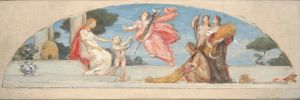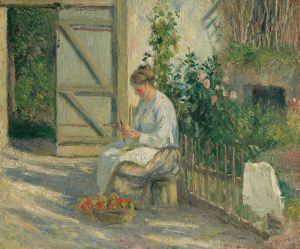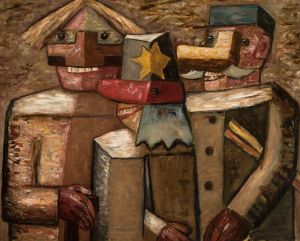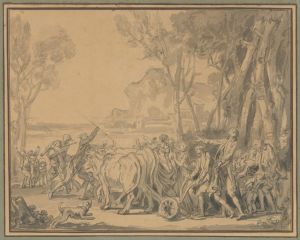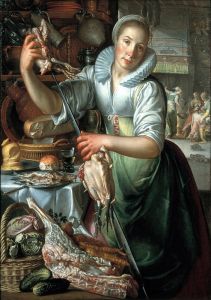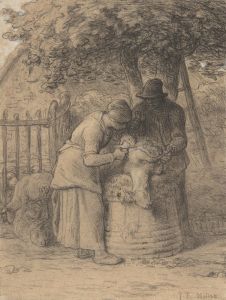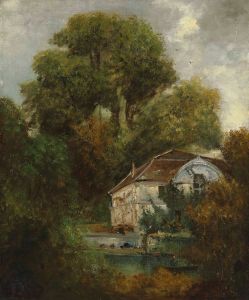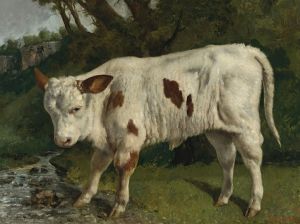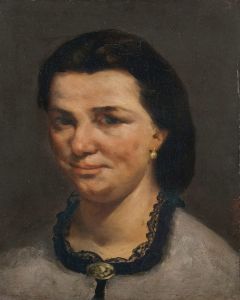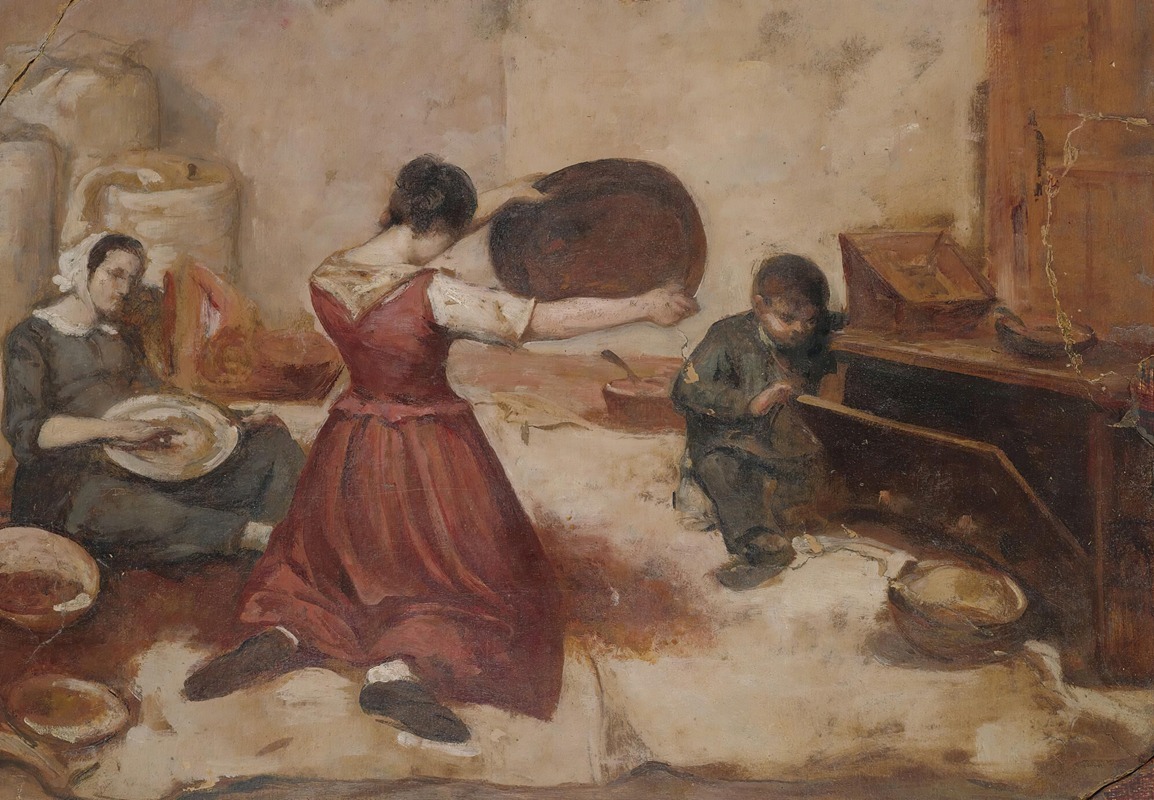
The corn sifters
A hand-painted replica of Gustave Courbet’s masterpiece The corn sifters, meticulously crafted by professional artists to capture the true essence of the original. Each piece is created with museum-quality canvas and rare mineral pigments, carefully painted by experienced artists with delicate brushstrokes and rich, layered colors to perfectly recreate the texture of the original artwork. Unlike machine-printed reproductions, this hand-painted version brings the painting to life, infused with the artist’s emotions and skill in every stroke. Whether for personal collection or home decoration, it instantly elevates the artistic atmosphere of any space.
"The Corn Sifters" (French: "Les Cribleuses de blé") is a painting by the French artist Gustave Courbet, completed in 1854. Courbet, a leading figure in the Realist movement, is known for his commitment to depicting everyday life and ordinary people with unidealized accuracy. This painting is a prime example of his Realist approach.
The artwork measures 131 cm by 167 cm and is currently housed in the Musée des Beaux-Arts de Nantes in France. "The Corn Sifters" portrays two young women engaged in the laborious task of sifting corn. The scene is set in a rustic interior, likely a barn or a similar agricultural setting, which is suggested by the presence of wooden beams and the earthy tones dominating the composition.
Courbet's attention to detail is evident in the realistic depiction of the women's clothing, the texture of the corn, and the wooden tools they use. The women are dressed in simple, practical attire appropriate for their work, and their expressions and postures convey a sense of concentration and effort. The artist's use of light and shadow enhances the three-dimensionality of the figures and the space they occupy, adding to the overall realism of the scene.
"The Corn Sifters" was exhibited at the Salon of 1855, where it garnered attention for its unembellished portrayal of rural labor. At the time, such subject matter was considered unconventional and even controversial, as it diverged from the more traditional themes of historical, mythological, or religious scenes that dominated academic art. Courbet's focus on the working class and his refusal to romanticize their labor challenged the established norms and expectations of the art world.
The painting is also notable for its composition and use of color. Courbet employs a balanced arrangement, with the two women positioned centrally and the tools and corn distributed harmoniously around them. The earthy palette, dominated by browns, yellows, and muted greens, reflects the natural environment and the simplicity of rural life. This choice of colors further emphasizes the authenticity and grounded nature of the scene.
Courbet's Realist approach in "The Corn Sifters" aligns with his broader artistic philosophy, which sought to depict the world as it is, without idealization or embellishment. He believed that art should represent real people and real experiences, a perspective that was both innovative and influential in the mid-19th century. This painting, along with others by Courbet, played a significant role in the development of Realism as a major movement in art history.
In summary, "The Corn Sifters" by Gustave Courbet is a significant work that exemplifies the artist's Realist style and his commitment to portraying the everyday lives of ordinary people. Through its detailed depiction of rural labor, balanced composition, and earthy color palette, the painting offers a powerful and unvarnished glimpse into the world of 19th-century agricultural workers.






